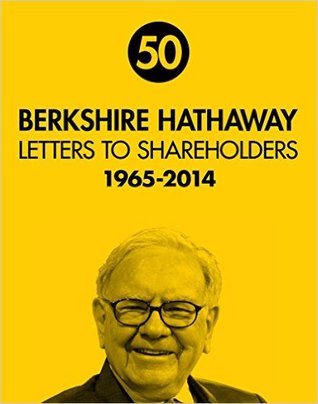More on this book
Community
Kindle Notes & Highlights
Read between
January 11 - January 15, 2019
The
If BPL had been the purchaser, my partners and I would have owned 100% of a fine business, destined to form the base for building the company Berkshire has become. Moreover, our growth would not have been impeded for nearly two decades by the unproductive funds imprisoned in the textile operation. Finally, our subsequent acquisitions would have been owned in their entirety by my partners and me rather than being 39%-owned by the legacy shareholders of Berkshire, to whom we had no obligation. Despite these facts staring me in the face, I opted to marry 100% of an excellent business (NICO) to a
...more
Charlie’s most important architectural feat was the design of today’s Berkshire. The blueprint he gave me was simple: Forget what you know about buying fair businesses at wonderful prices; instead, buy wonderful businesses at fair prices.
See’s was a legendary West Coast manufacturer and retailer of boxed chocolates, then annually earning about $4 million pre-tax while utilizing only $8 million of net tangible assets. Moreover, the company had a huge asset that did not appear on its balance sheet: a broad and durable competitive advantage that gave it significant pricing power. That strength was virtually certain to give See’s major gains in earnings over time. Better yet, these would materialize with only minor amounts of incremental investment.
To date, See’s has earned $1.9 billion pre-tax, with its growth having required added investment of only $40 million. See’s has thus been able to distribute huge sums that have helped Berkshire buy other businesses that, in turn, have themselves produced large distributable profits. (Envision rabbits breeding.) Additionally, through watching See’s in action, I gained a business education about the value of powerful brands that opened my eyes to many other profitable investments.
Trading shares of a wonderful business — which Berkshire most certainly is — for ownership of a so-so business irreparably destroys value.
Too often CEOs seem blind to an elementary reality: The intrinsic value of the shares you give in an acquisition must not be greater than the intrinsic value of the business you receive.
(As a director of 19 companies over the years, I’ve never heard “dis-synergies” mentioned, though I’ve witnessed plenty of these once deals have closed.)
Listening to Charlie has paid off.
As Yogi Berra said, “Every Napoleon meets his Watergate.”)
At both BPL and Berkshire, we have never invested in companies that are hell-bent on issuing shares. That behavior is one of the surest indicators of a promotion-minded management, weak accounting, a stock that is overpriced and — all too often — outright dishonesty.
A CEO with capital employed in a declining operation seldom elects to massively redeploy that capital into unrelated activities. A move of that kind would usually require that long-time associates be fired and mistakes be admitted. Moreover, it’s unlikely that CEO would be the manager you would wish to handle the redeployment job even if he or she was inclined to undertake it.
At Berkshire, we can — without incurring taxes or much in the way of other costs — move huge sums from businesses that have limited opportunities for incremental investment to other sectors with greater promise. Moreover, we are free of historical biases created by lifelong association with a given industry and are not subject to pressures from colleagues having a vested interest in maintaining the status quo.
Charlie told me long ago to never underestimate the man who overestimates himself. And Ling had no peer in that respect.
Whatever their line, never forget that 2+2 will always equal 4. And when someone tells you how old-fashioned that math is ---zip up your wallet, take a vacation and come back in a few years to buy stocks at cheap prices.
Cash, though, is to a business as oxygen is to an individual: never thought about when it is present, the only thing in mind when it is absent.


